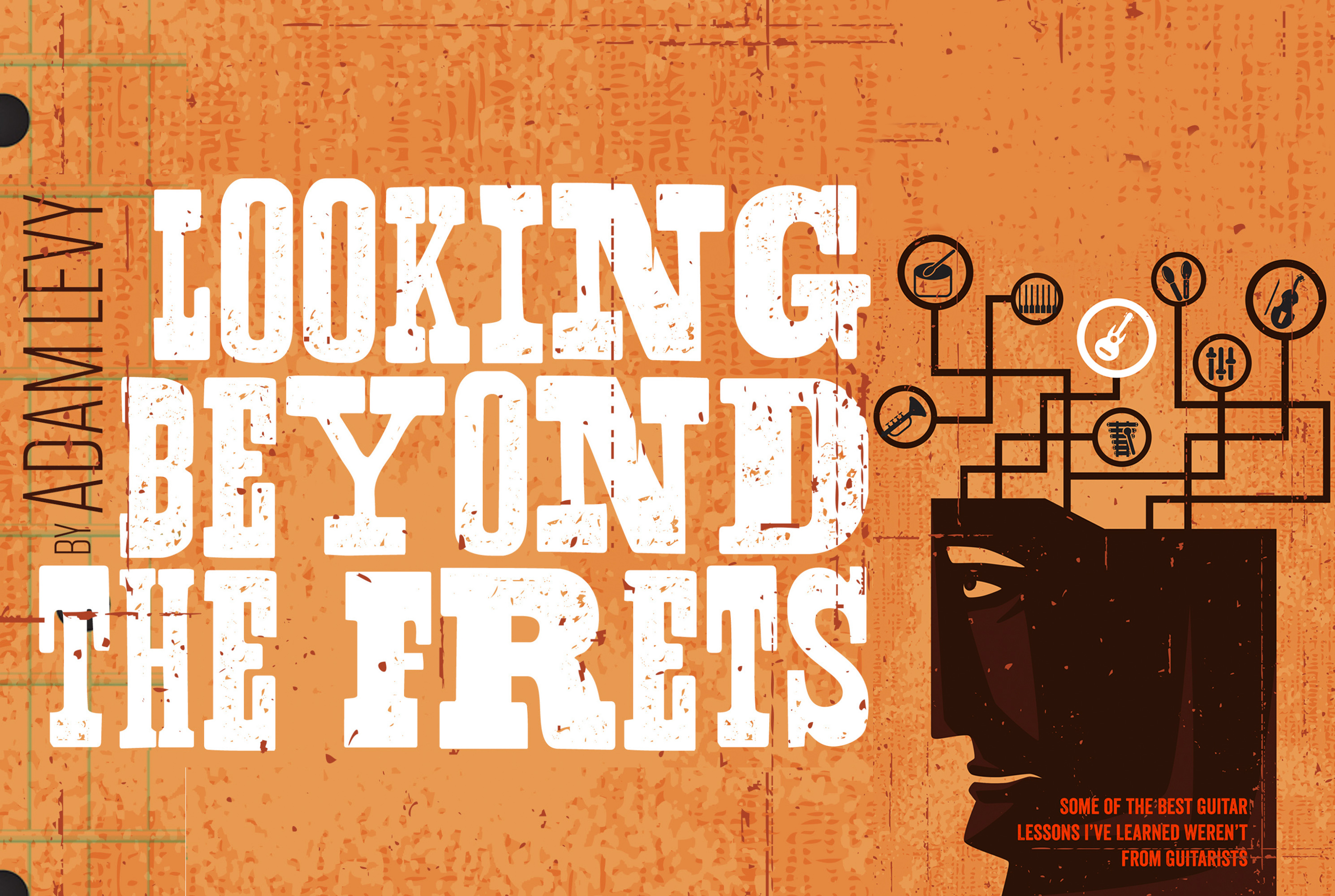![]()
The advice I’m about to give is probably not what you’d expect to hear from a devoted guitarist and guitar-based educator, but I hope you’ll take heed if you’re serious about bumping up your musical growth. Here it is: Take a few lessons from a musician who is not a guitarist. If you’re wondering why, that’s good. That means your imagination is already kicking into gear. What do you think you could learn from a clarinetist? From a drummer? I’ve learned lasting lessons from both and I’d like to share with you some of what I gleaned.
Several years ago when I lived in Berkeley, California, I was searching for new ways to approach improvisation. While I’d already done plenty of studying at that point, and was gigging regularly, I felt like my musical growth had hit a dead end. Around that time, I happened to hear a local clarinetist named Ben Goldberg and I was really struck by the imaginative way he improvised. I could hear that he was using scales and other familiar material in his playing, but the way he strung his ideas together was really fresh. I managed to nail him down for a couple of lessons.
The things he suggested I work on were mostly about phrasing. In one of Goldberg’s exercises, we were improvising on a song that had one chord change per measure. (Many classic jazz tunes are structured this way.) Instead of soloing on each chord as it came along, as I’d been doing, Goldberg asked me to blur the bar lines. For example, if the first two measures of a tune called for four beats of Dm7 followed by four beats of G7, I might think of five beats of Dm7 and three of G7 — or vice versa. It’s a small change, but I found that it led me to play lines that sounded less pedantic, less predictable. When I started thinking about longer phrases this way, my improvisations got freer and freer — even though I never abandoned the song’s core structure.
More recently, I took a lesson from Mark Stepro — a drummer in Los Angeles, where I live now, because I wanted to improve the rhythmic clarity of my guitar playing. Stepro focused my attention on rudimentary skills. He set a drum pad on a stand and had me sticking left, right, left, right, as evenly as I could, over and over. Done correctly, the stick tips should bounce back up from the pad with each stroke. Solid drummers make this look like kid stuff, but I can tell you that it’s not. The whole lesson was nothing more than left, right, left, right, as I strove to even my strokes and perfect the bounce. This got me thinking on how I could better my picking strokes on the guitar. Since my lesson with Stepro, I’ve spent a lot of time working on that…choosing one string or a pair of strings and picking down, up, down, up, not fretting any notes with my left hand. This routine helps me keep my picking hand as true as possible. I’m still thinking about how I might incorporate my left hand into this regimen.
As a TrueFire educator, of course I encourage you to soak up absolutely everything you can about guitar playing from instructors who are passionate about our instrument. But anytime you find yourself in a rut, remember that there are lots of experts on other instruments who are just as passionate about what they do, and there’s plenty that we can learn from them.
For further exploration, I’d like to share three YouTube clips with you. The first is a live performance by Wayne Krantz, one of the most rhythmically adventurous guitar players I know of. Watch for the sudden change in tempo and groove at 2:20, not just in Krantz’s guitar part, but in the bass and drums as well. Throughout his improvisation, Krantz uses rhythmic concepts to propel his solo.
The next clip features guitarist Jim Hall with the Art Farmer Quartet. I love so much about Hall’s playing here, including his warm tone and his unusual chord voicings, but the part I really want to draw your attention to is the guitar/flugelhorn duet that starts at 4:56. When the rest of the band drops out, Hall and Farmer just keep on swinging. That takes real rhythmic conviction.
Finally, here’s Julian Lage performing his Etude #1. I admire Lage’s facility on the instrument. How could one not? But the main reason I’m including this clip is that I hope it inspires you to write your own etudes. Want to work on a specific technique or concept? Write a piece of music that will challenge you to grow.






